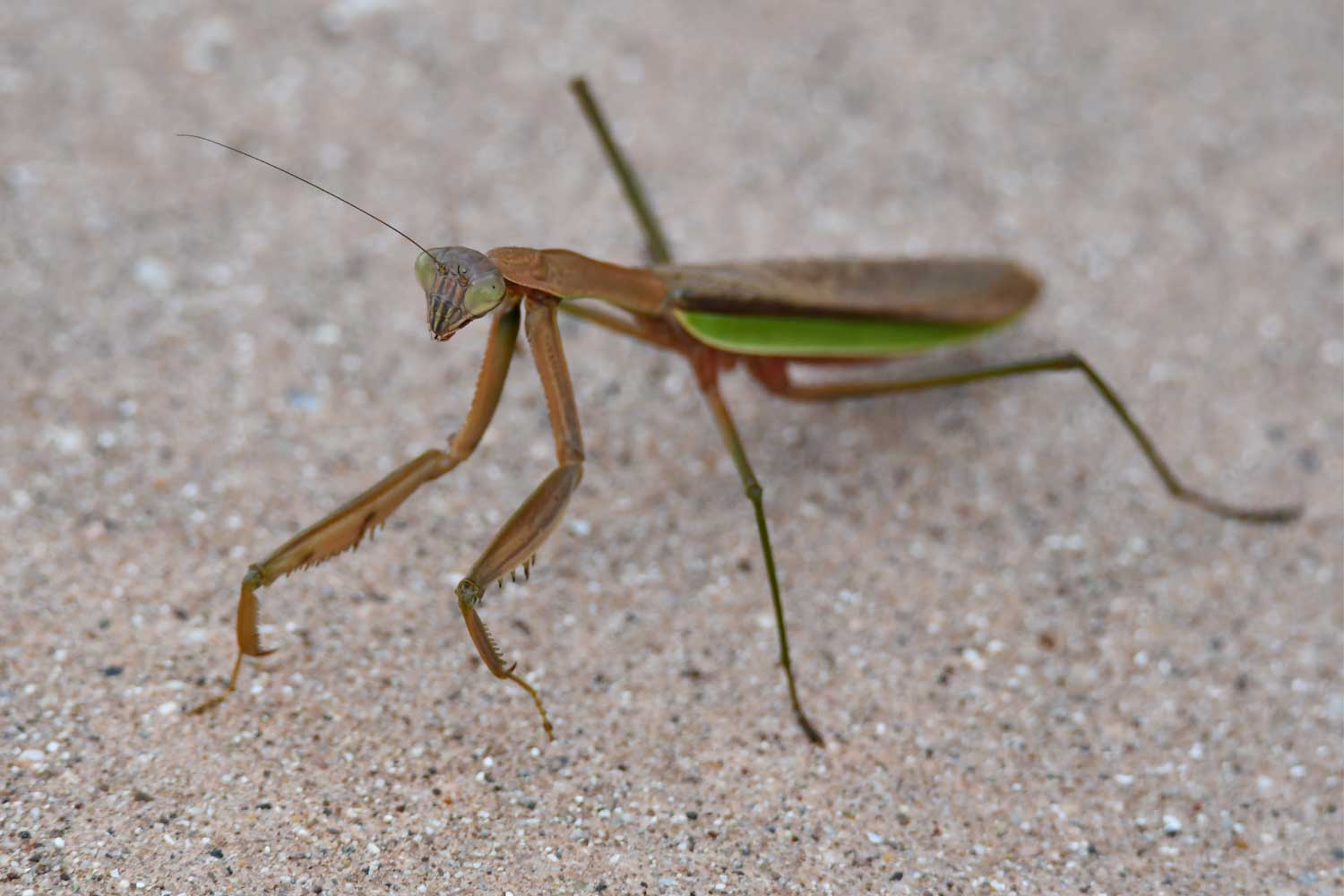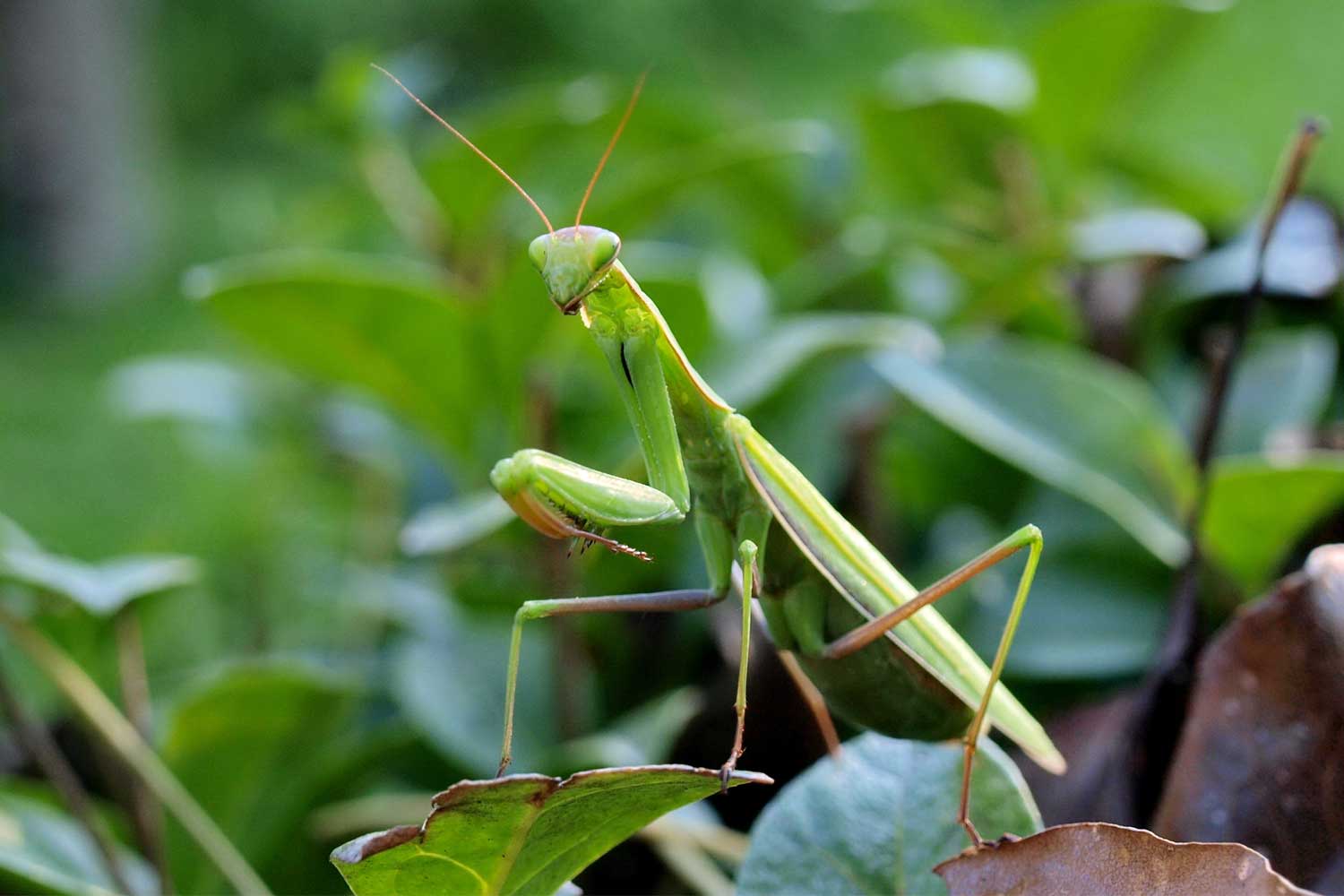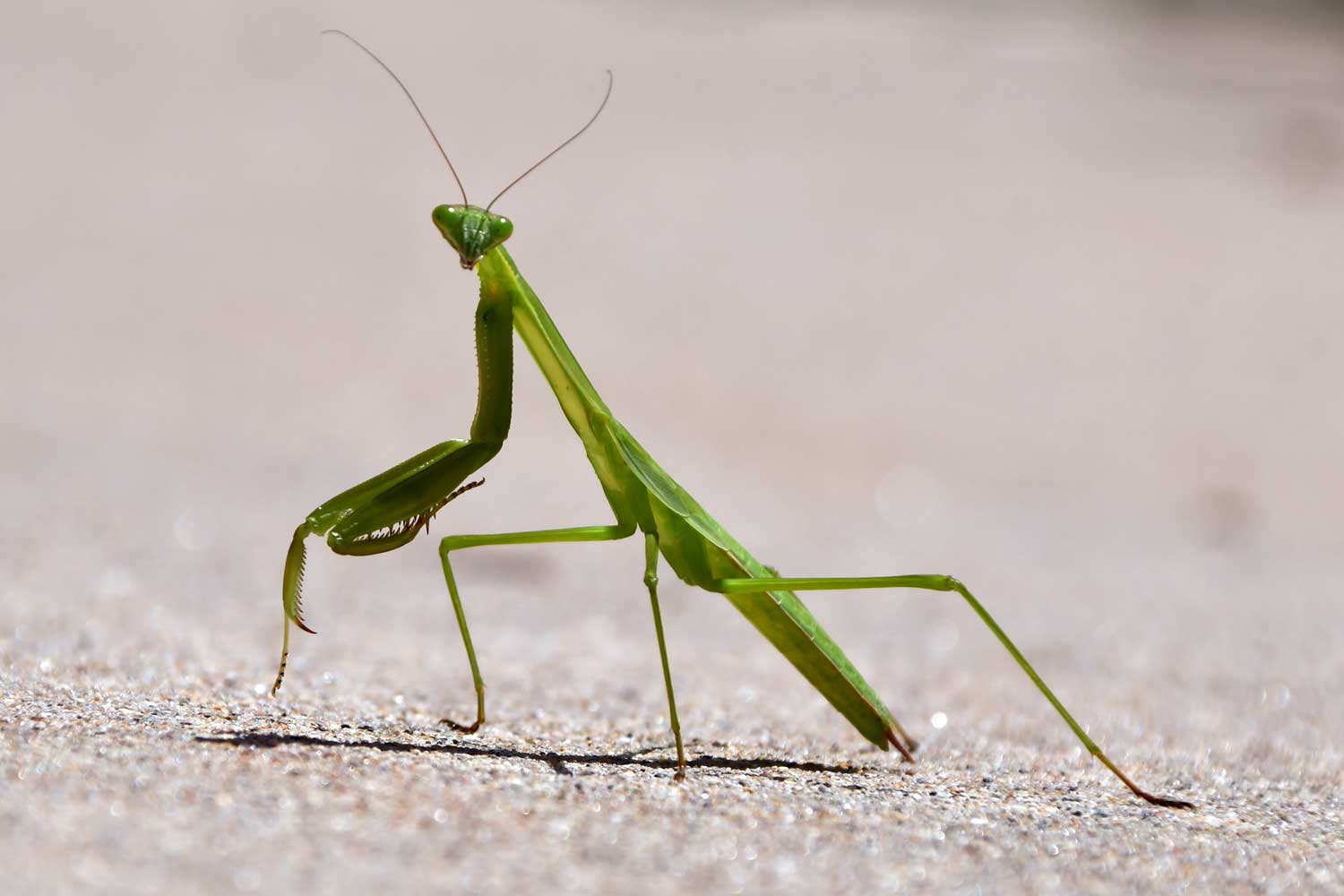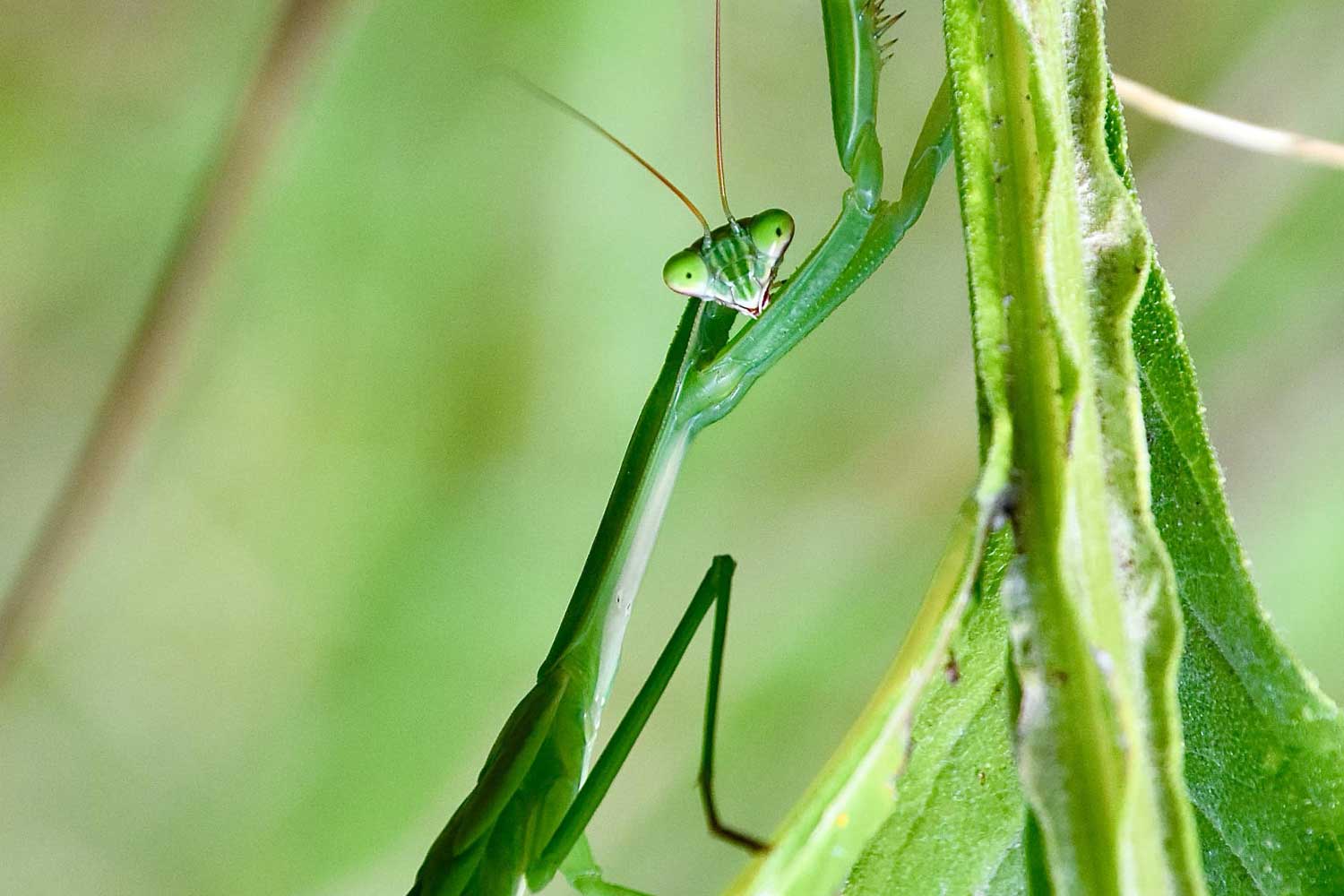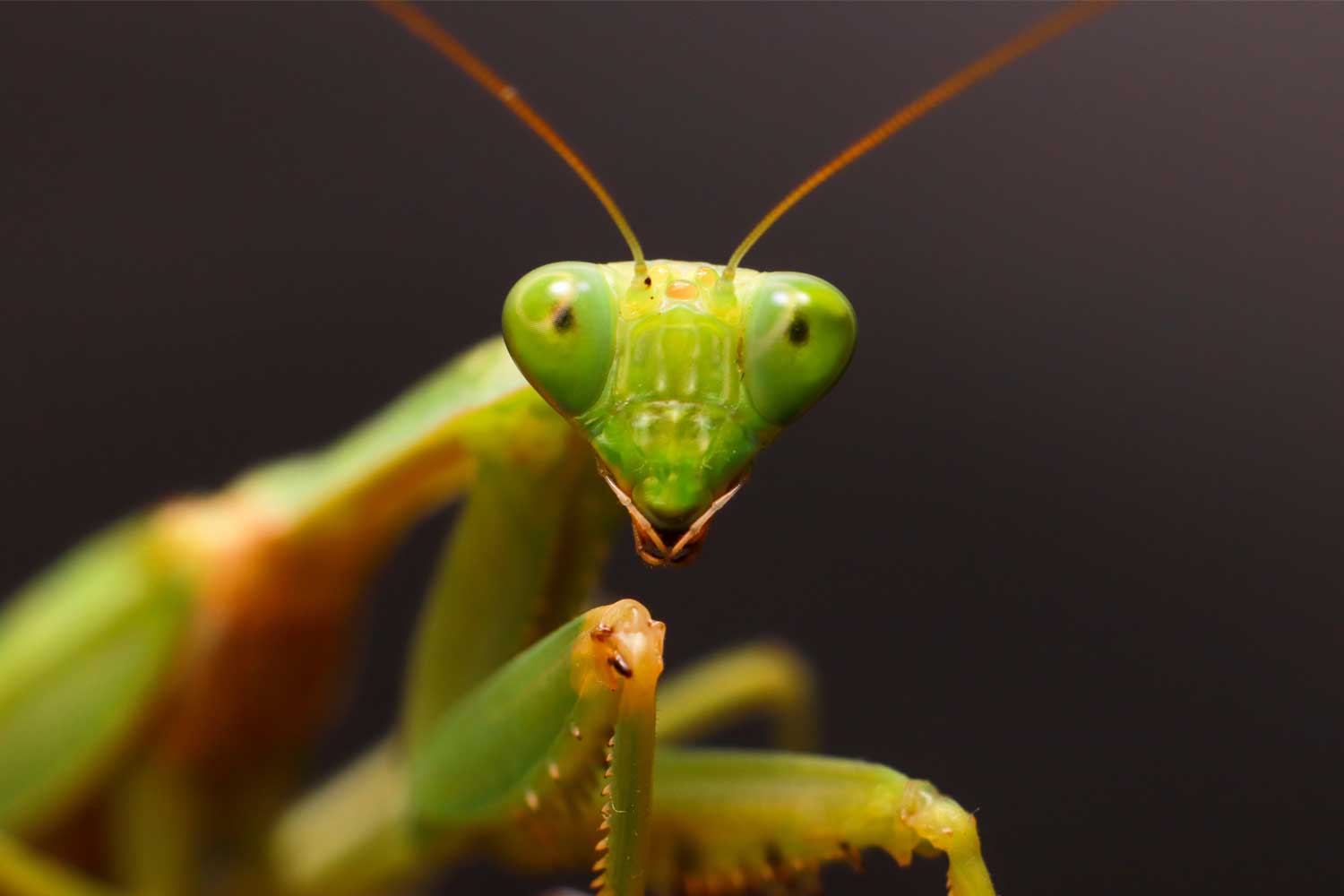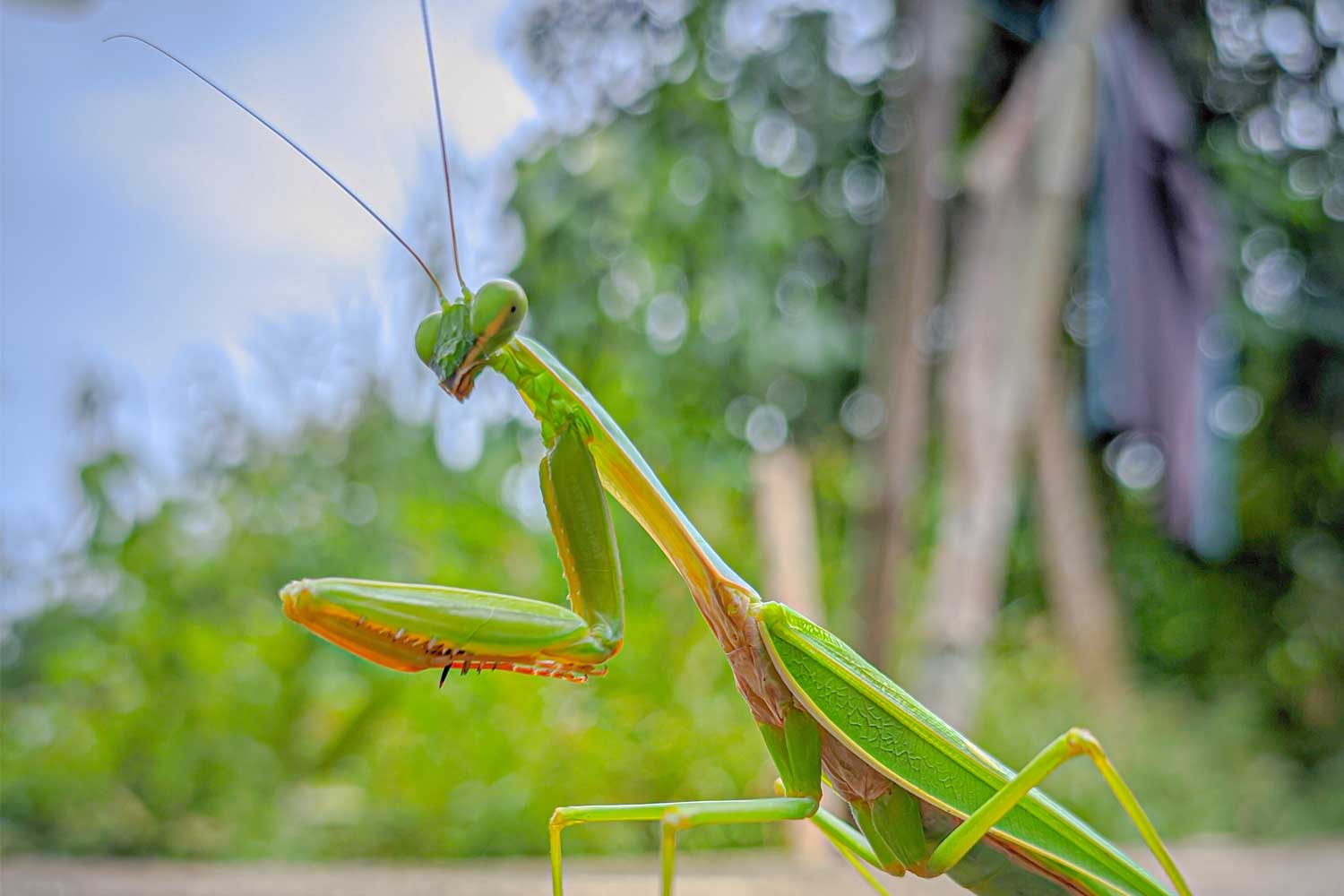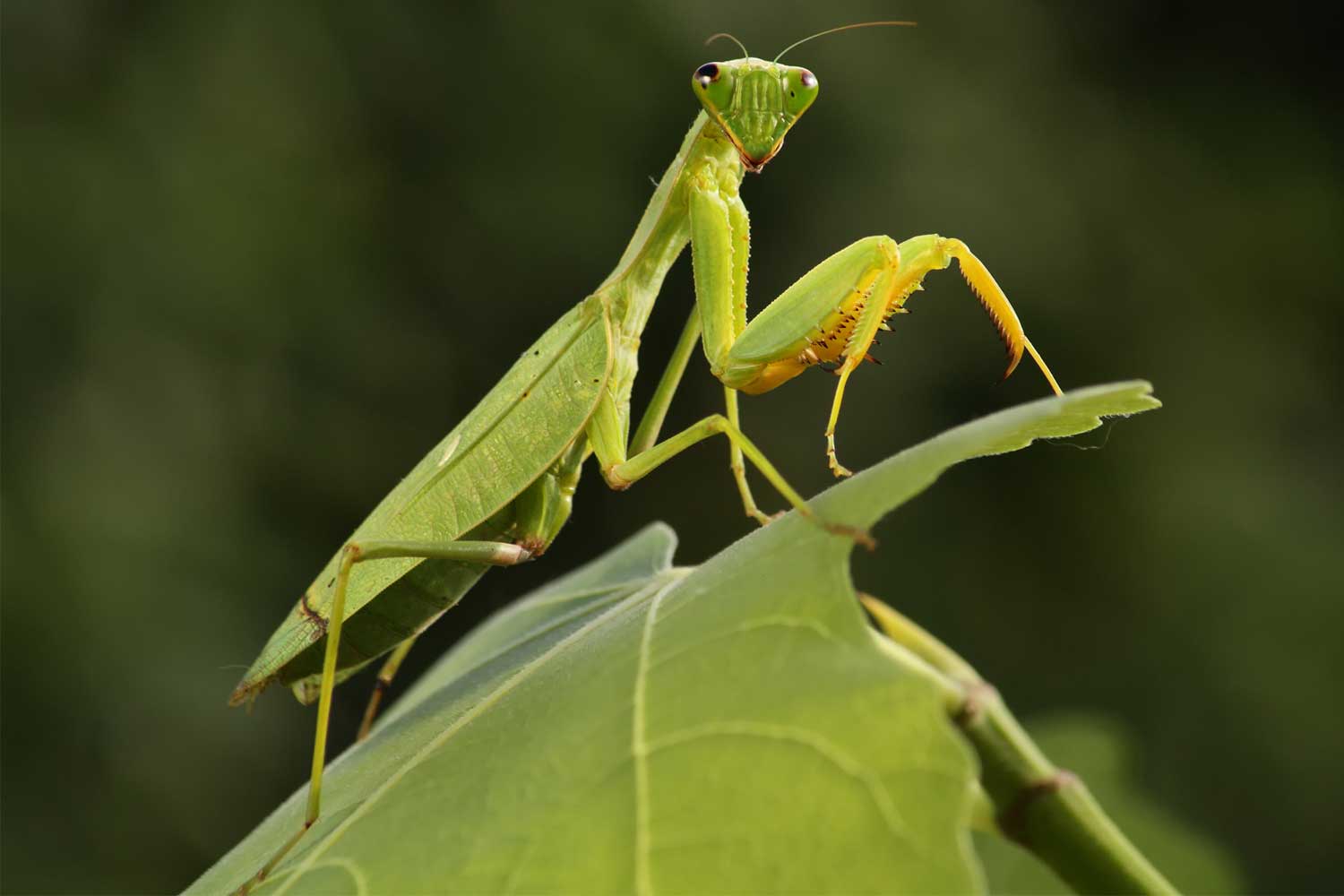Five fast facts about easy-to-miss praying mantises
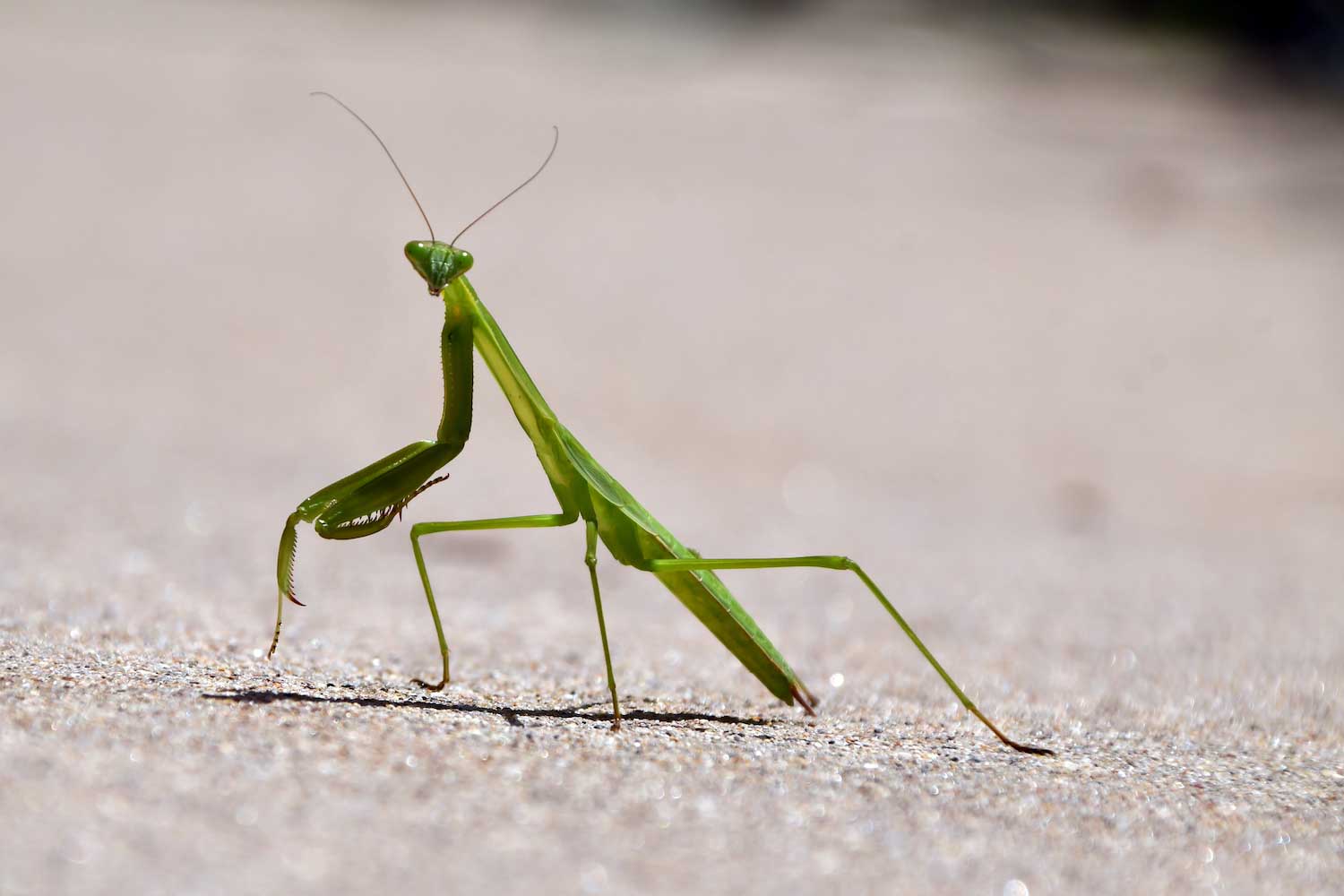
Most of the insects we are familiar with are tiny little things, but praying mantises are among the giants of the insect world. The praying mantises we see locally can be 2 inches to 3 inches long or even more, but don't let that fool you into thinking they will be easy to spot.
Despite their large size, praying mantises blend in with their surroundings, making them difficult to find in trees and other plants. Blending in benefits them because it helps them hunt.
Praying mantises are carnivores, so camouflage is a good adaptation that helps them hunt. They aren't picky when it comes to prey. They will eat anything that is smaller than them, according to the Connecticut Agricultural Experiment Station. Common food items include insects and invertebrates, but they will also eat small reptiles and amphibians and small birds like hummingbirds.
Only one species is native to Illinois
The world is home to more than 2,500 mantis species, but only one, the Carolina mantid, is native to Illinois. It, though, is only native to the southern two-thirds of the state, according to the Outdoor Illinois Journal. The mantis species most common across Illinois and what we most often see in northern Illinois is the Chinese mantis. Another mantis species that can be found in Illinois is the European mantis.
As you would expect from their names, neither the Chinese mantis nor the European mantis are native to the United States or even North America. Both these mantises have been present in the United States for more than a century, however. The Chinese mantis was first reported in the United States in 1897 near Philadelphia, while the European mantis was first reported in New York in 1899.
They get their name from their legs
Because of their penchant for hunting live prey, some people think praying mantises are called preying mantises, but the religious spelling of the homophones is the correct name. Why are they called praying mantises? Because they really do look like they are praying. These insects often hold their forelegs in a folded position that gives them the appearance of sitting in prayer, National Geographic reports.
While more than 2,500 mantis species exist in the world, one, the European praying mantis, even has a scientific name that is a nod to this pious posture. Its scientific name is Mantis religiosa, with religiosa being Latin for religious.
They have excellent camouflage
One of the most well-known things about praying mantises is just how well they can blend into their environment. You can be looking at a praying mantis and not even know it because it looks so much like the plant it is sitting on. Our local mantises are either green, brown or both to blend in with the sticks and leaves where they like to hang out and stalk prey. They can even change colors after they molt their exoskeletons to better help them blend in, the New York Department of Environmental Conservation reports.
Our mantises aren't the only masters of camouflage, however. There's an orchid mantis that lives in parts of Asia that is pink or yellow in color to match the orchid bloom, National Geographic reports. And a mantis called the conehead mantis that lives in southern Europe and Turkey has a spiny crown on its head to help it blend in with the twigs and branches of the trees where it resides. There are even mantis species that will molt into a black color to blend in with the charred landscape created by brush fires that are common in the areas where they live, according to Treehugger.
They have an insect superpower
Most of us don't think twice about turning our heads to the left or right to get a good look at something. In the insect world, this is an incredibly rare ability possessed only by praying mantises, Treehugger reports. They are the only insects in the world that can turn their heads 180 degrees. This superpower is useful when hunting prey. Praying mantises silently sit and wait for prey to approach. Being able to turn their head and see around them helps them find prey without moving and giving away their location.
This isn't the only ability they rely on to help them hunt. Praying mantises also have excellent vision and can detect motion from as far as 60 feet away. One reason for this is because they are the only invertebrate in the world that can see in 3D, which helps them detect motion. Their enhanced vision comes from their five eyes. They have two large eyes that face forward and three smaller eyes that only detect light and motion. Once they spot prey, they can jump forward and catch it in their forelegs, which are called raptorial legs, National Geographic reports. Some of their leg segments contain interlocking spines that make it impossible for prey to get away once caught.
They sometimes practice cannibalism
Mating season for mantises is usually in the fall, and it can be a dangerous time for the male half of the mating pair. During mating, the female mantis will sometimes bite off the male's head, National Geographic reports. It can sometimes take hours for her to eat his head, and during the time the male will continue trying to mate as it dies.
Not all mantis species engage in this practice of sexual cannibalism, PBS reports. In fact, only a few do. They aren't alone either. Some beetles, crickets, grasshoppers, scorpions and spiders also do. Scientists aren't exactly sure why animals sometimes practice sexual cannibalism. It could be related to hunger. Some research has even shown female mantises that are well-nourished are not as likely to bite their male mate's head off. It's also possible that it's a beneficial act to allow the male's DNA to be carried on to the next generation, because the male is more likely to fertilize the female's eggs when mating is prolonged by cannibalism. The female, of course, benefits because she gets ready access to a good source of nutrition.
Among the mantis species that do engage in sexual cannibalism, it is far from universal. It only occurs about 30% of the time, National Geographic reports. Whether practicing cannibalism or not, after her eggs are fertilized, the female will lay hundreds of eggs and then die soon after. The praying mantis nymphs hatch in the spring. They begin eating right away and may eat other mantises during this time. They will grow and molt several times before reaching adulthood over the summer.
